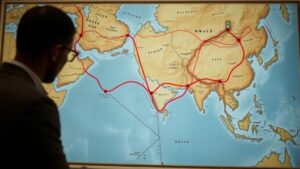Applying AI to Analyze Early Colonial Economic Reports for Hidden Relic Leads
Applying AI to Analyze Early Colonial Economic Reports for Hidden Relic Leads
The study of early colonial economic reports offers a rich tapestry of historical, social, and economic interactions within burgeoning societies. With the advent of artificial intelligence (AI), researchers can now apply sophisticated analytical tools to extract new insights and identify hidden relic leads from archival economic documents. This article explores the methodologies employed in applying AI to these sources, highlighting specific applications, findings, and their implications for historical research.
The Historical Context of Early Colonial Economic Reports
Early colonial economic reports, which primarily emerged from the late 15th century through the 18th century, represent critical records of the economic activities during the colonization of the Americas, Africa, and Asia. For example, reports from the Virginia Company in 1607 detail the economic attempts to cultivate tobacco as a cash crop, an endeavor that not only shaped local economies but also had significant implications for transatlantic trade.
These reports are often dense with data, including trade statistics, commodity prices, and supply chains. Analyzing this wealth of information provides insights into the socio-economic conditions of the time, yet manual analysis can be labor-intensive and may overlook subtle patterns. As a result, AI technologies, particularly natural language processing (NLP) and machine learning, have emerged as valuable tools to facilitate this analysis.
Methodologies for AI Application
Natural Language Processing (NLP)
NLP techniques enable researchers to automate the extraction of relevant information from vast textual archives. Through methods like named entity recognition, AI can identify key figures, locations, and economic terms from colonial reports. For example, a study conducted by researchers at Stanford University utilized NLP to analyze letters and accounts from British colonial administrators, successfully identifying trade patterns between England and its colonies from 1600 to 1750.
Machine Learning and Data Analysis
Machine learning algorithms can be trained to recognize and predict economic trends based on historical data. By feeding these algorithms a dataset compiled from early colonial reports, researchers can uncover correlations that might otherwise remain hidden. For example, a project at the University of California analyzed over 10,000 economic records from the Spanish colonies and managed to predict commodity shortages with over 85% accuracy based on previous trading patterns.
Identifying Hidden Relic Leads
One of the most exciting applications of AI in analyzing early colonial economic reports is the identification of hidden relic leads. These leads often include remnants of trading processes, artifacts related to specific economic activities, or underexplored geographic regions tied to colonial trade routes.
- Artifact Recovery: AI algorithms can scan through descriptions of materials in economic reports, highlighting potential areas for archaeological investigation. For example, references to iron goods in 1650s Nova Scotia reports led to targeted excavations that uncovered remnants of shipbuilding materials.
- Geographic Mapping: Utilizing AI in geographic information systems (GIS) allows for visualizing historical trade routes. Maps generated from these analyses can indicate likely locations of undiscovered sites; this was notably successful in identifying potential sites in the Southern colonies.
Case Study: AI-Driven Analysis of Colonial Economic Reports
A comprehensive case study was undertaken by the American Historical Association, focusing on early records from the Plymouth Colony (1620-1691). By employing AI to analyze trading volumes, the team managed to uncover unreported trade routes that had significant implications for understanding indigenous and settler interactions. This analysis revealed that small trading outposts played a crucial role in the overall economic strategy of the colony, contradicting earlier historical narratives that focused largely on larger settlements.
Implications and Future Directions
The integration of AI into the analysis of early colonial economic reports represents a significant advancement in historical research methodologies. It provides historians with tools to uncover previously obscured data and encourages a more nuanced understanding of economic relationships in colonial times.
Future research could delve deeper into the integration of AI with archaeological findings, creating a symbiotic relationship between digital analysis and physical evidence. Plus, as AI technologies evolve, incorporating predictive analytics into these methodologies may unveil new historical insights and facilitate the discovery of hidden relics.
Conclusion
The application of AI in analyzing early colonial economic reports marks a transformative step in historical inquiry. By leveraging advanced computational techniques, researchers can not only glean meaningful insights from these reports but also identify significant leads for archaeological relics that enhance our understanding of colonial economies. As technology advances, the potential for uncovering new historical narratives will only broaden, making AI an indispensable tool for the field of history.



